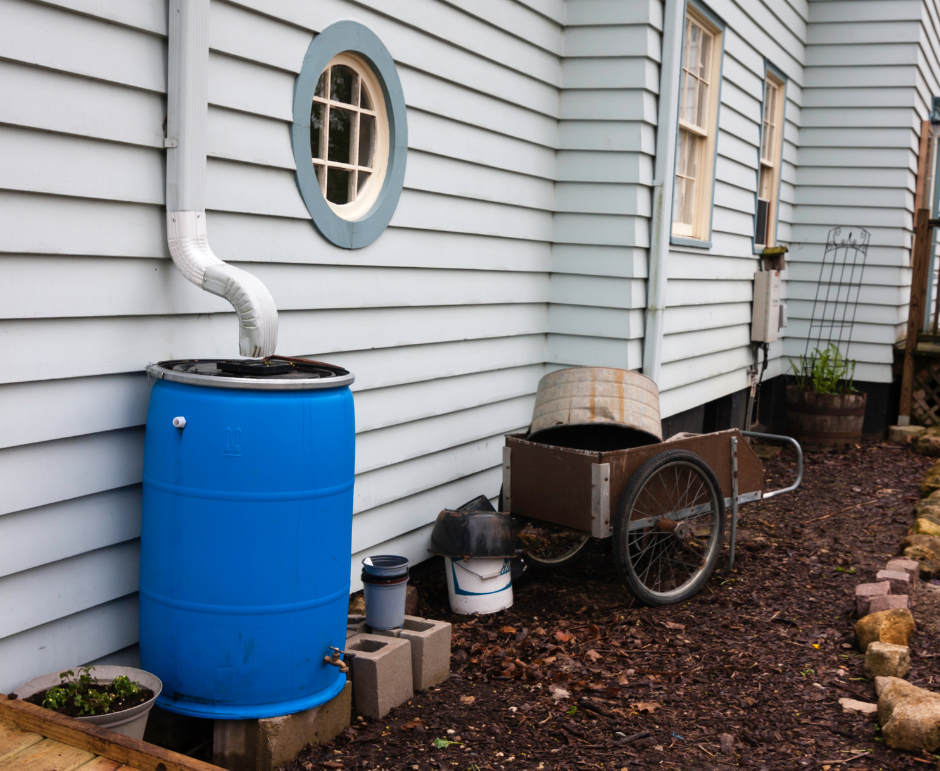Rainwater diverted into a barrel can be an eco-friendly & cost-effective way to complete many common tasks including watering your lawn or garden, cleaning outdoor surfaces, filling fountains or birdbaths, and simply reducing stormwater runoff on your property. Rain barrels are best placed on level ground under a rain gutter and out of direct sunlight. But it’s not as simple as that. It’s important to know which type of rain collector you will be. Many homeowners place 1 barrel beside their garage (to use for a nearby garden) while others place a barrel at each downspout for maximum collection.
Before investing in a rainwater collection system, consider this:
Barrel Size & Quantity — Often not considered is the volume of rainfall in relation to your roof size. An average rainfall can produce a lot of water that of course gets directed to your downspouts. For a typical ranch-style home in a 1-inch rain, the water that comes off your roof would be over 600 gallons. With 4 downspouts, each would produce 150 gallons. A standard rain barrel only holds 50 gallons. Where do the other 100+ gallons end up? Next to your foundation.
Water Usage — It’s important to be aware of the average rainfall near you, and how frequently you plan to make use of your stored water. To prevent spillage next to your foundation, before the next storm, you’ll need to make use of any stored rainwater.
Danger Zone — That area next to your foundation that you want to keep dry. If it gets too wet it will expand and push against the foundation, potentially producing water in your basement and even expensive structural issues. How many barrels are you collecting in? What happens when you don’t make use of the water? A filled 50 gallon rain barrel weighs 400 lbs., 10 rain barrels equal 2 tons! If not emptied, you would have extremely heavy, concentrated weight pushing down on your home’s danger zone 24 hours a day, 7 days a week. At this point, foundation problems are imminent.
Overflow — Often not included in rain barrel kits, is an overflow pipe or hose. This would be an efficient way to help direct excess water away from your structure’s foundation. Another item often not included is a gutter downspout diverter, which can come in handy if you’re considering switching between multiple barrels in one location. Placing water-loving plants near each barrel may also aid in preventing water from gathering in that danger zone.
Gutters — Vital in protecting your home’s foundation. Before tapping into the gutter system, it’s important to evaluate the performance of your gutters including downspouts, elbows, aprons and gutter covers.
In areas with little rainfall and long periods of drought, rain barrels can be a great resource and money saver. But in areas with a long and/or heavy rain-season, the rain barrel lifestyle you envision may end up costing you big time if you don’t first consider your roof size, barrel quantity and water usage.
Looking to update your gutters before investing in rain collection? Our professional installers can match new gutters to your specific roof pitch and home colors. Contact Close to Home Construction for a free consultation.

